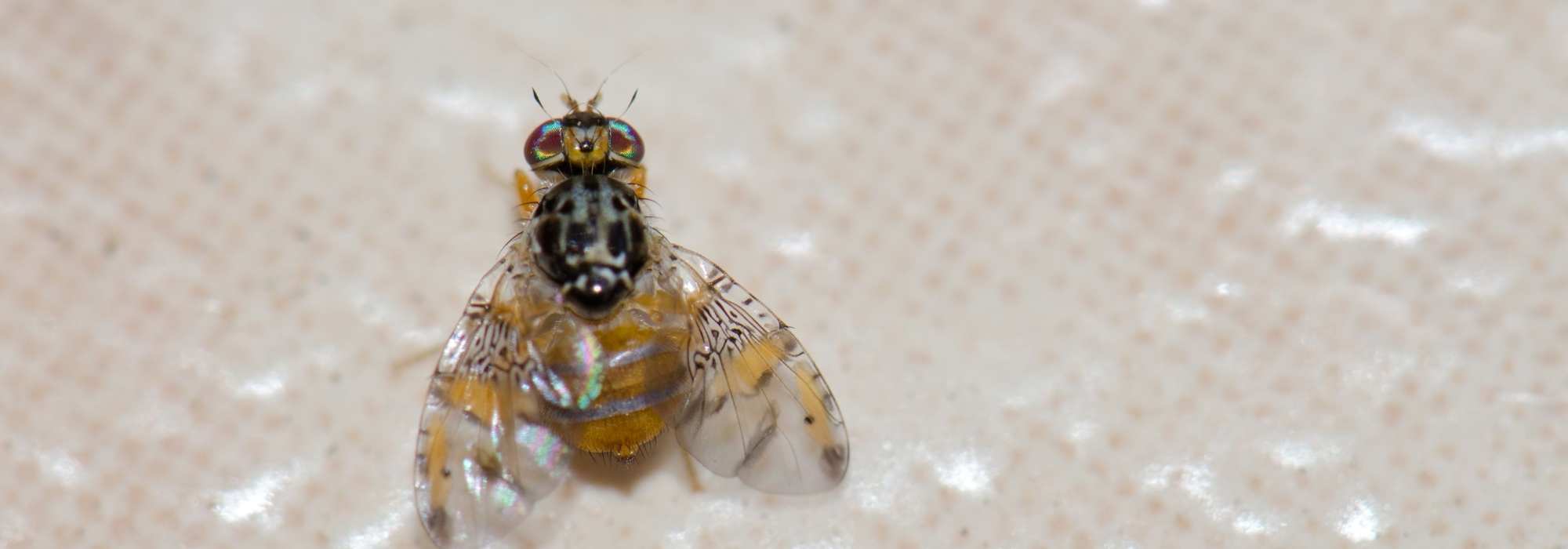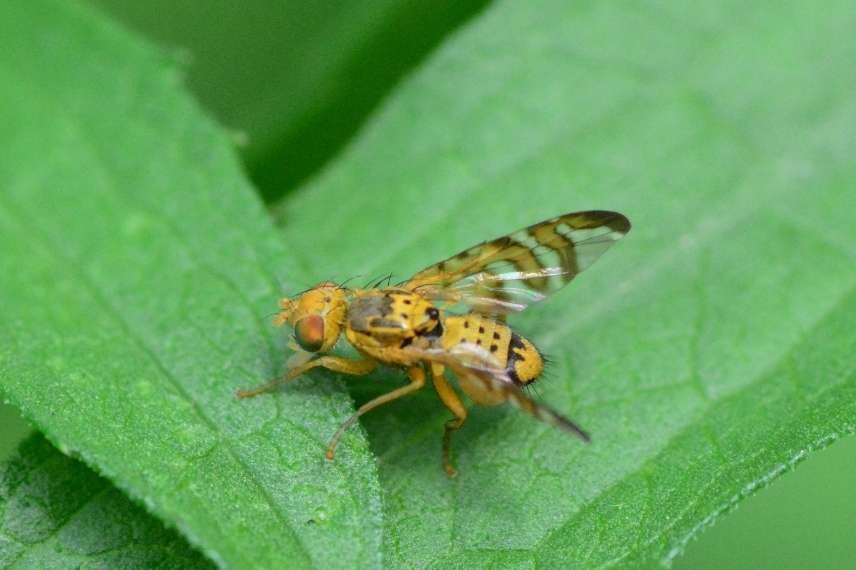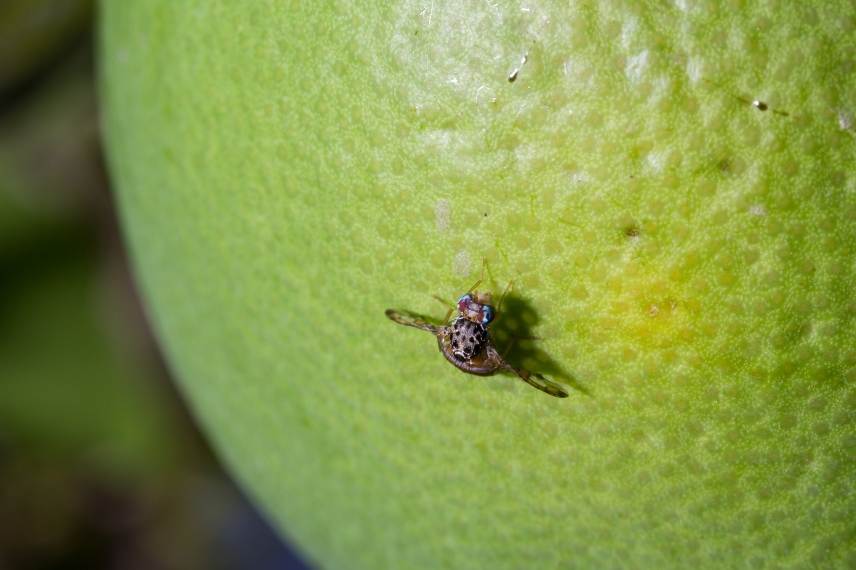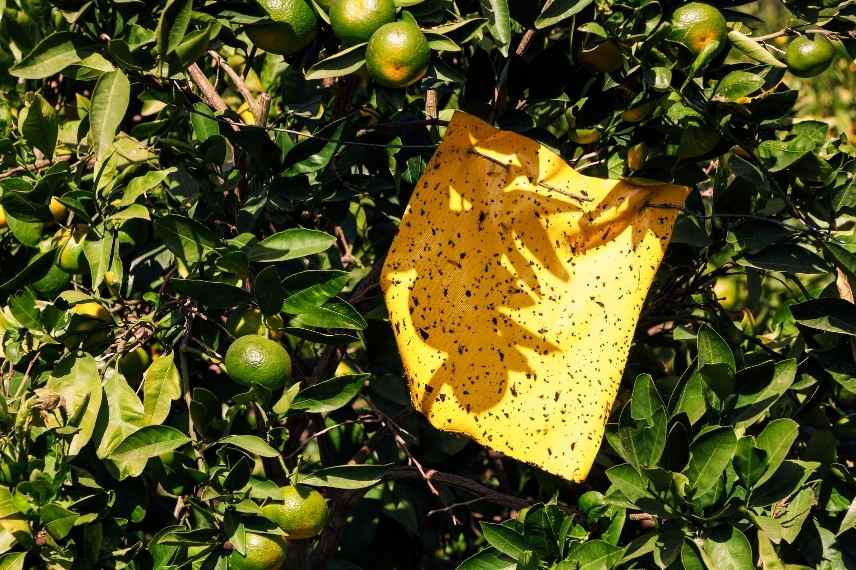
How to combat the Mediterranean fruit fly?
Treatment and prophylactic measures against Ceratitis capitata
Contents
Some flies have a particular preference for fruits. This is the case with the cherry fruit fly (Rhagoletis cerasi) or the olive fruit fly (Bactrocera oleae). There is another one that can cause serious damage to orchards in the south of France. It is the Mediterranean fruit fly (Ceratitis capitata), which has the ability to attack many fruits, from citrus trees to peach trees, including apple trees, apricot trees, fig trees… Highly voracious and particularly prolific, the larvae of this fly can ruin a harvest in just one season.
Discover everything you need to know about the Mediterranean fruit fly to better combat it and prevent its invasion.
How to identify the Mediterranean fruit fly?
Native to tropical Africa, the Mediterranean fruit fly (Ceratitis capitata) is a dipteran belonging to the Tephritidae family. In fact, it’s the sole representative of this family on the European continent. Now established throughout the Mediterranean basin and Corsica, it has found ideal climatic conditions there. However, climate change and rising temperatures may gradually push its range further north.
Sometimes referred to as the ceratitis fly, adults can be identified by their yellowish head with emerald green eyes, greyish-yellow body, and yellow-orange patterns on their wings. The larvae are whitish-yellow with two black eyes, a highly visible mouth hook, and reddish-brown pupae. Adults measure between 4 and 5 mm, while larvae reach 8 mm. 
This destructive pest causes significant damage to fruit crops in southern France, affecting both professional orchards and amateur gardens alike.
What is the life cycle of Ceratitis capitata?
If the climate conditions suit it, the Mediterranean fruit fly develops very rapidly. To the point of having 6 to 7 generations per year if temperatures are between 25 and 32°C. It should be noted that a larva can complete its development in just two weeks!
But it all begins in spring, from May onwards, when young adults emerge from their winter dormancy (diapause) and mate. From then on, the females lay their eggs beneath the epidermis of fruits, which they pierce with their ovipositor. A single female can produce up to 600 eggs during her short lifespan. Three days after laying, the larvae hatch and begin feeding on the fruit pulp. Given that multiple females may deposit eggs in the same fruit, the infestation can become severe.
Once fully fed, the larvae pupate (they transform into chrysalises). Then, they drop to the soil, burrowing a few centimetres deep. And a new generation is born. It is in this state that the Mediterranean fruit fly overwinters, provided temperatures remain above 2°C. If the thermometer drops below this for at least a week, they die.
How to tell if the fruits are affected?
Since the larvae develop inside the fruit, by the time it’s noticed, the damage is already done. Indeed, a spot appears around a puncture point, then grows and spreads quite rapidly. Meanwhile, the larvae continue their destructive work, the flesh of the fruit eventually decomposes. Rot spreads to the entire fruit, which then falls.
The fruits become unfit for consumption. And, of course, they cannot be stored for preservation.
This Mediterranean fruit fly is particularly feared because it is polyphagous. It attacks nearly all fruit trees, from citrus trees to apple, quince, and pear trees, as well as peach, apricot, plum, and cherry trees, Actinidias (which produce kiwis), fig trees, pomegranates, olive trees, medlars, persimmon trees (which produce kaki fruit), grapevines, and even strawberry plants…

The Mediterranean fruit fly attacks almost all fruits.
How to combat the Mediterranean fruit fly?
No natural curative treatment is available to eliminate larvae or adults. However, it is possible to counter invasions with organic control methods. The key is to act at the very beginning of spring to prevent female flies from laying eggs:
- The yellow sticky chromatic trap: flying insects, particularly flies, are attracted to yellow. These sticky traps prove highly attractive—insects get stuck and cannot escape. These traps are mainly used to detect the presence of Mediterranean fruit flies, but for greater effectiveness, they should be used in conjunction with pheromone traps.

The yellow sticky trap helps detect the presence of Mediterranean fruit flies.
- The pheromone trap for fruit flies: it consists of a yellow plastic trap—a highly attractive colour for these insects—and pheromone capsules that lure males by synthetically replicating female sexual hormones. The males remain trapped in the cup and cannot reproduce. These pheromone traps should be placed directly in trees from April until the end of the mating season, typically September-October, depending on climate conditions.
- The adapter for homemade traps using a bottle: shaped like a funnel, this adapter fits onto a standard water bottle. Its yellow colour attracts flies, which then become trapped inside the bottle, lured by bait containing diammonium phosphate.
Without forgetting prevention
To prevent or limit Mediterranean fruit fly attacks, it’s best to focus on prophylactic methods:
- Carefully collect all ripe fallen fruit from the soil and dispose of them at a recycling centre. Do not compost them. These fruits may potentially harbour larvae that could continue the life cycle.
- Remove blemished fruit still on the tree. Before discarding them, don’t hesitate to cut them open to check for larvae. If none are present, they can be safely consumed.
- For small trees, installing fine-mesh insect nets can prevent female flies from reaching the fruit.
- Winter soil cultivation helps bring pupae (a type of chrysalis) to the surface, where exposure to even brief cold spells will kill them. If you keep chickens, you can also let them roam, as their scratching will unearth these pupae, which lie just a few centimetres below the soil.
- Subscribe!
- Contents
































Comments